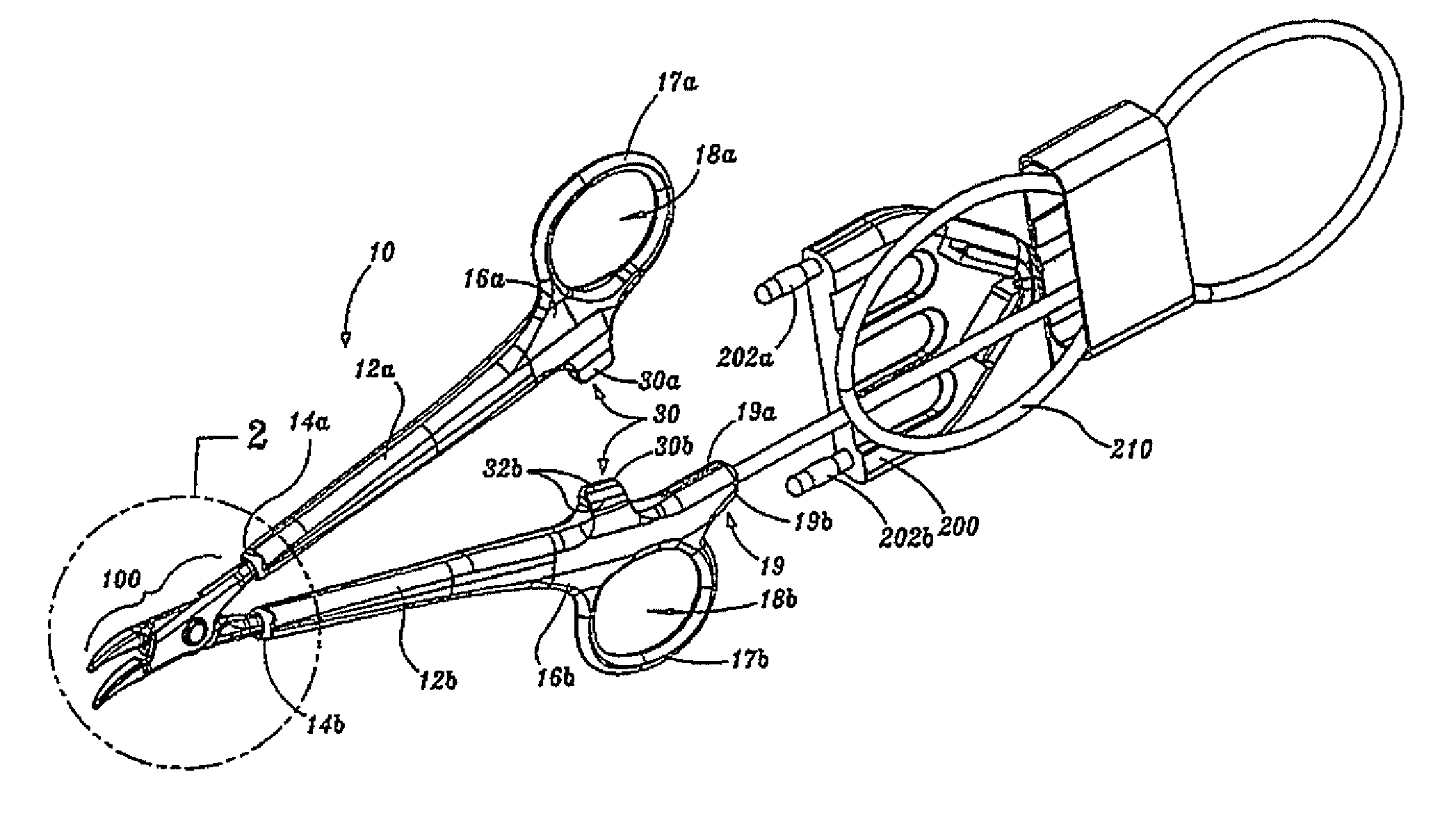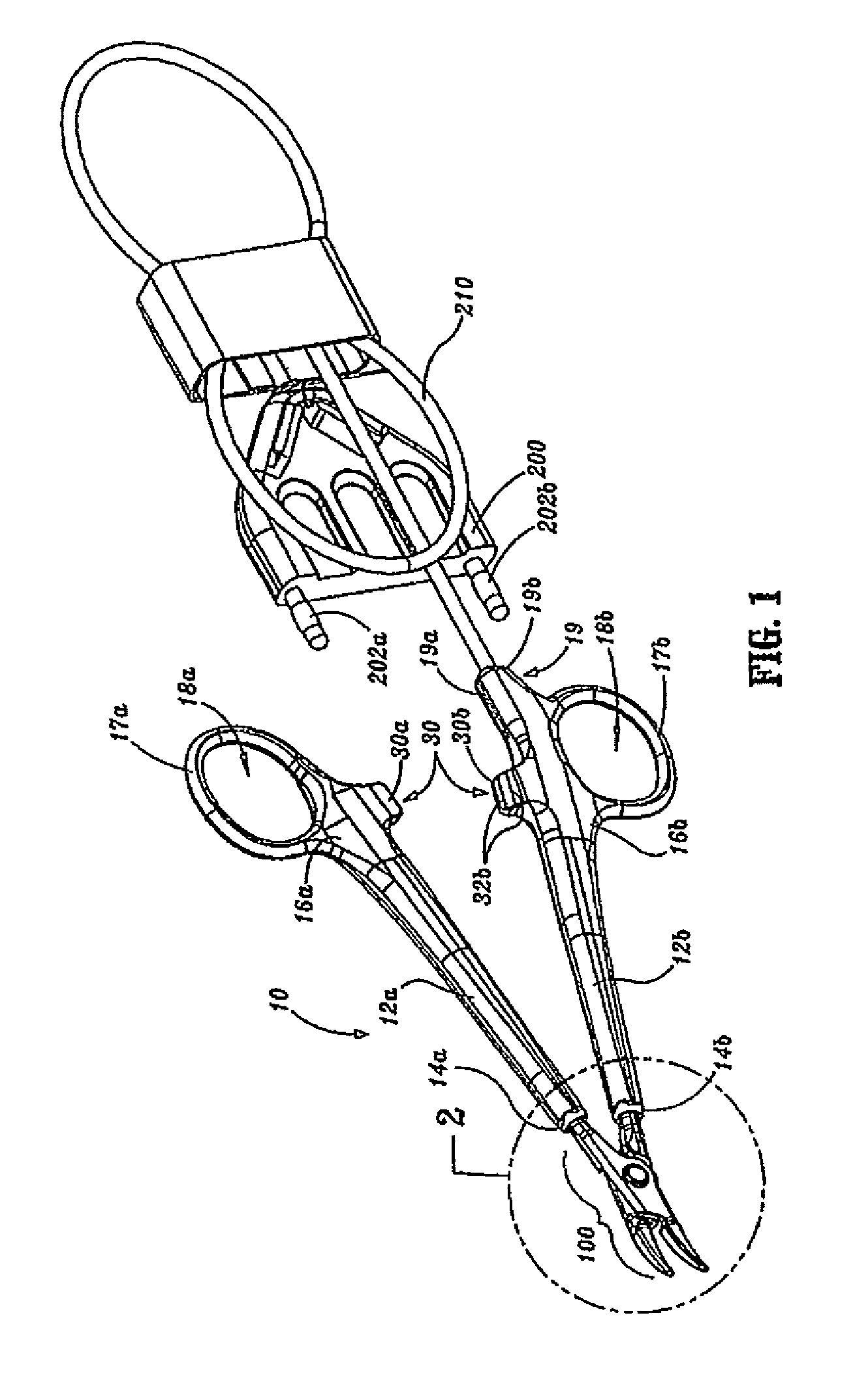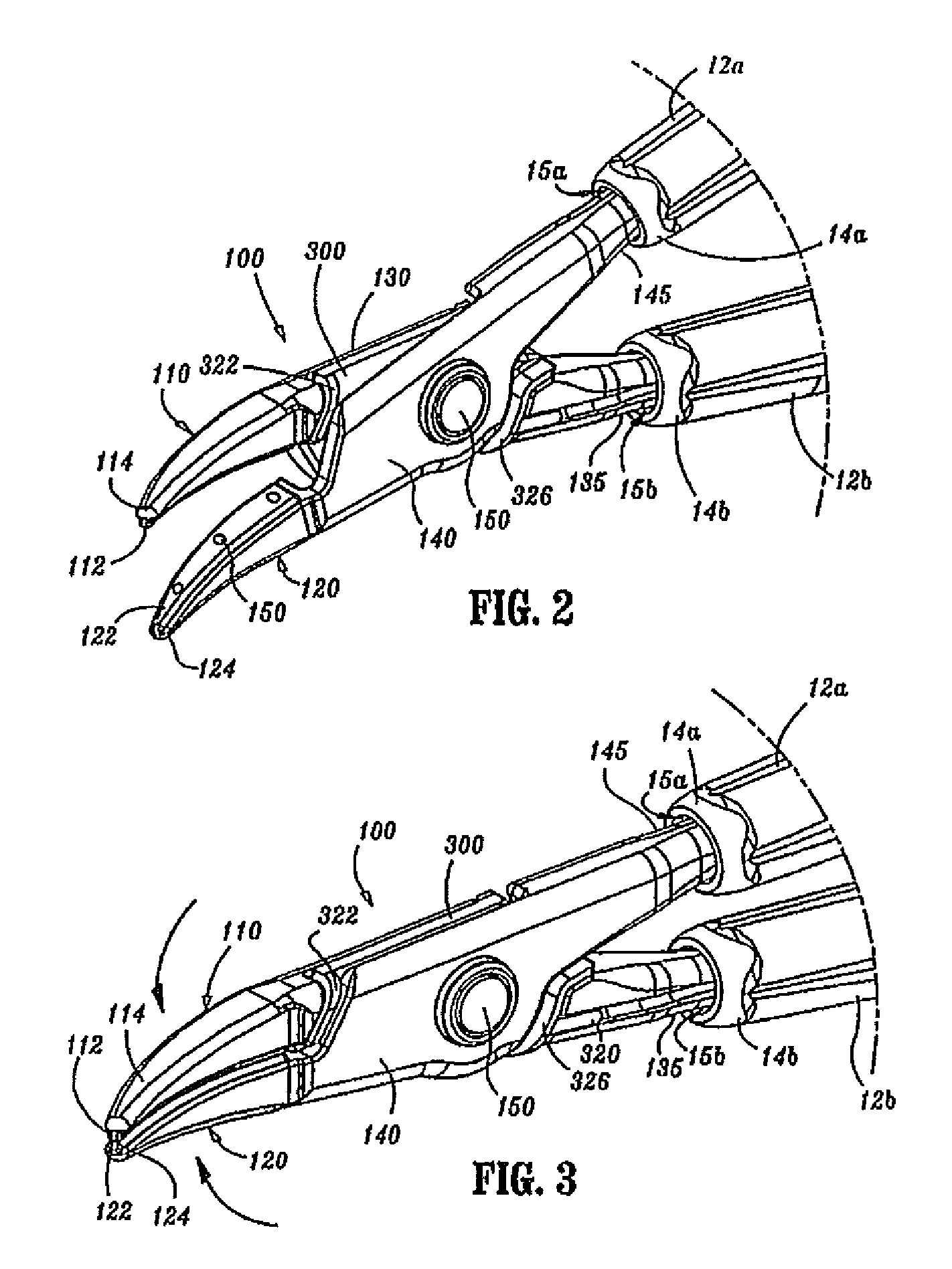Vessel sealing instrument
a sealing instrument and valve technology, applied in the field of forceps, can solve the problems of not being able to safely coagulate the arteries, shred or tear, and the lumen may not be properly or effectively sealed
- Summary
- Abstract
- Description
- Claims
- Application Information
AI Technical Summary
Benefits of technology
Problems solved by technology
Method used
Image
Examples
Embodiment Construction
[0036]Referring now to FIGS. 1-4, a forceps 10 for use with open surgical procedures includes elongated shaft portions 12a and 12b each having a proximal end 16a and 16b, respectively, and a distal end 14a and 14b, respectively. In the drawings and in the descriptions which follow, the term “proximal”, as is traditional, will refer to the end of the forceps 10 which is closer to the user, while the term “distal” will refer to the end which is further from the user.
[0037]The forceps 10 includes an end effector assembly 100 which attaches to distal ends 14a and 14b of shafts 12a and 12b, respectively. As explained in more detail below, the end effector assembly 100 includes pair of opposing jaw members 110 and 120 which are pivotably connected about a pivot pin 150.
[0038]Preferably, each shaft 12a and 12b includes a handle 17a and 17b disposed at the proximal end 16a and 16b thereof which each define a finger hole 18a and 18b, respectively, therethrough for receiving a finger of the u...
PUM
 Login to View More
Login to View More Abstract
Description
Claims
Application Information
 Login to View More
Login to View More - R&D
- Intellectual Property
- Life Sciences
- Materials
- Tech Scout
- Unparalleled Data Quality
- Higher Quality Content
- 60% Fewer Hallucinations
Browse by: Latest US Patents, China's latest patents, Technical Efficacy Thesaurus, Application Domain, Technology Topic, Popular Technical Reports.
© 2025 PatSnap. All rights reserved.Legal|Privacy policy|Modern Slavery Act Transparency Statement|Sitemap|About US| Contact US: help@patsnap.com



